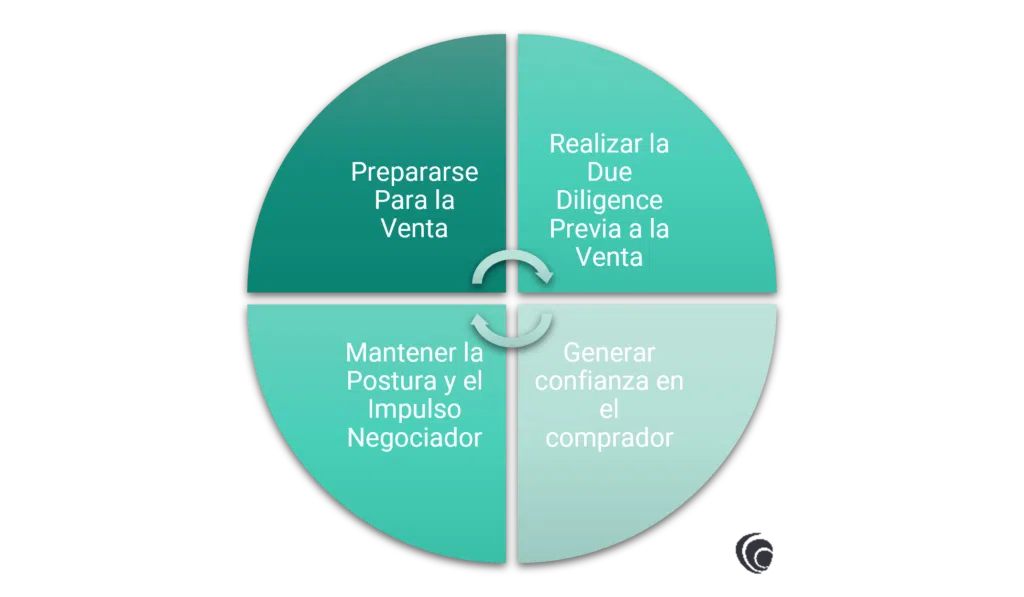Negotiating a letter of intent (LOI) is a pivotal stage in any business transaction. It involves a meticulous examination of various components to secure favorable terms. In this article, we will explore deal structure intricacies, addressing financial and legal aspects influencing sale negotiations outcomes. Additionally, we will discuss goals and tips essential for navigating negotiations effectively, ensuring mutually beneficial agreements and successful ventures. Understanding these nuances is crucial for stakeholders to achieve their objectives and foster fruitful collaborations.
Table of Contents
ctors are crucial elements in every negotiation, defining the structure and payment methods for the purchase price. Here are the key financial components to consider:
Legal considerations also play a crucial role in shaping the structure and execution of a transaction. Here are the key legal components to consider:
As a seller, the primary goals in negotiating a favorable deal structure are to:
Achieving these goals requires careful consideration of deal structure and negotiation strategies to optimize the transaction outcome.
To maximize deal structure and negotiation outcomes, sellers should adhere to a strategic framework encompassing meticulous preparation, proactive engagement, steadfast negotiation, and trust-building measures. Each aspect plays a pivotal role in shaping the trajectory of sale negotiations and ultimately securing a favorable deal structure:
Thorough preparation lays the foundation for successful sale negotiations outcomes. Sellers should embark on a comprehensive due diligence process to meticulously identify and address potential risks and vulnerabilities within their business operations. This entails conducting a thorough evaluation of financial records, operational processes, legal obligations, and market dynamics. By proactively addressing any areas of concern, sellers can enhance the attractiveness of their business and instill confidence in prospective buyers. Additionally, optimizing operations and minimizing dependencies on key personnel further fortifies the business's value proposition and reduces perceived risk, thereby strengthening the seller's negotiating position.
Anticipating buyer concerns and addressing them proactively through pre-sale due diligence is essential for preempting potential obstacles and building buyer confidence. Sellers should meticulously review their business operations, financial performance, legal compliance, and any potential liabilities to identify and address issues before they arise during sale negotiations. By conducting thorough due diligence internally and proactively addressing any identified concerns, sellers can mitigate surprises and foster transparency, thereby instilling confidence in the transaction and positioning themselves favorably in negotiations.
mount for achieving favorable outcomes. Sellers should engage with multiple buyers to leverage competitive dynamics and enhance negotiating leverage. Demonstrating confidence in the business's value proposition and steadfastly advocating for favorable terms bolsters the seller's position at the negotiation table. However, it's crucial to avoid tactics that may undermine trust or signal desperation, as maintaining credibility and fostering a constructive negotiation environment is essential for reaching mutually beneficial agreements. Additionally, maintaining momentum throughout the sale negotiations process is crucial for expediting the transaction and preventing stalling or delays that could erode buyer confidence.
Fostering open communication and transparency with the buyer is instrumental in building trust and facilitating smoother sale negotiations. Sellers should strive to establish a collaborative and constructive relationship with prospective buyers, openly addressing concerns and providing timely and accurate information. By demonstrating integrity, reliability, and a commitment to transparency, sellers can alleviate buyer concerns and foster a sense of trust, thereby facilitating more productive and mutually beneficial sale negotiations. Additionally, building a rapport with the buyer fosters a positive negotiating environment and lays the groundwork for a successful transaction.

In summary, negotiating a favorable deal structure demands a thorough understanding of financial components, legal considerations, and strategic negotiation tactics. Sellers must prioritize liquidity, mitigate risks, and align payment methods with their objectives. By adopting a strategic framework encompassing preparation, proactive engagement, steadfast negotiation, and trust-building measures, sellers can optimize outcomes, secure favorable terms, and lay the groundwork for successful transactions.